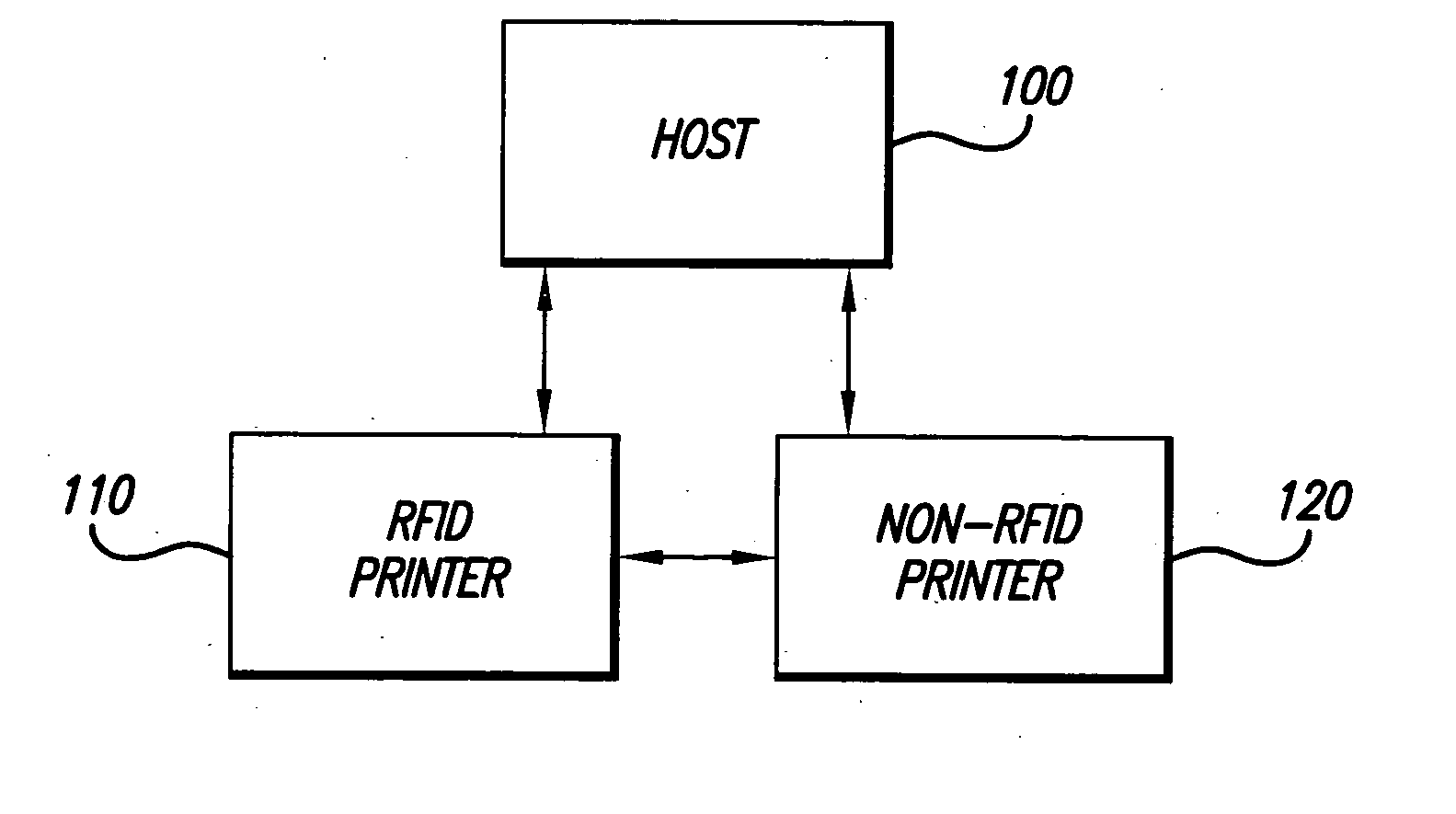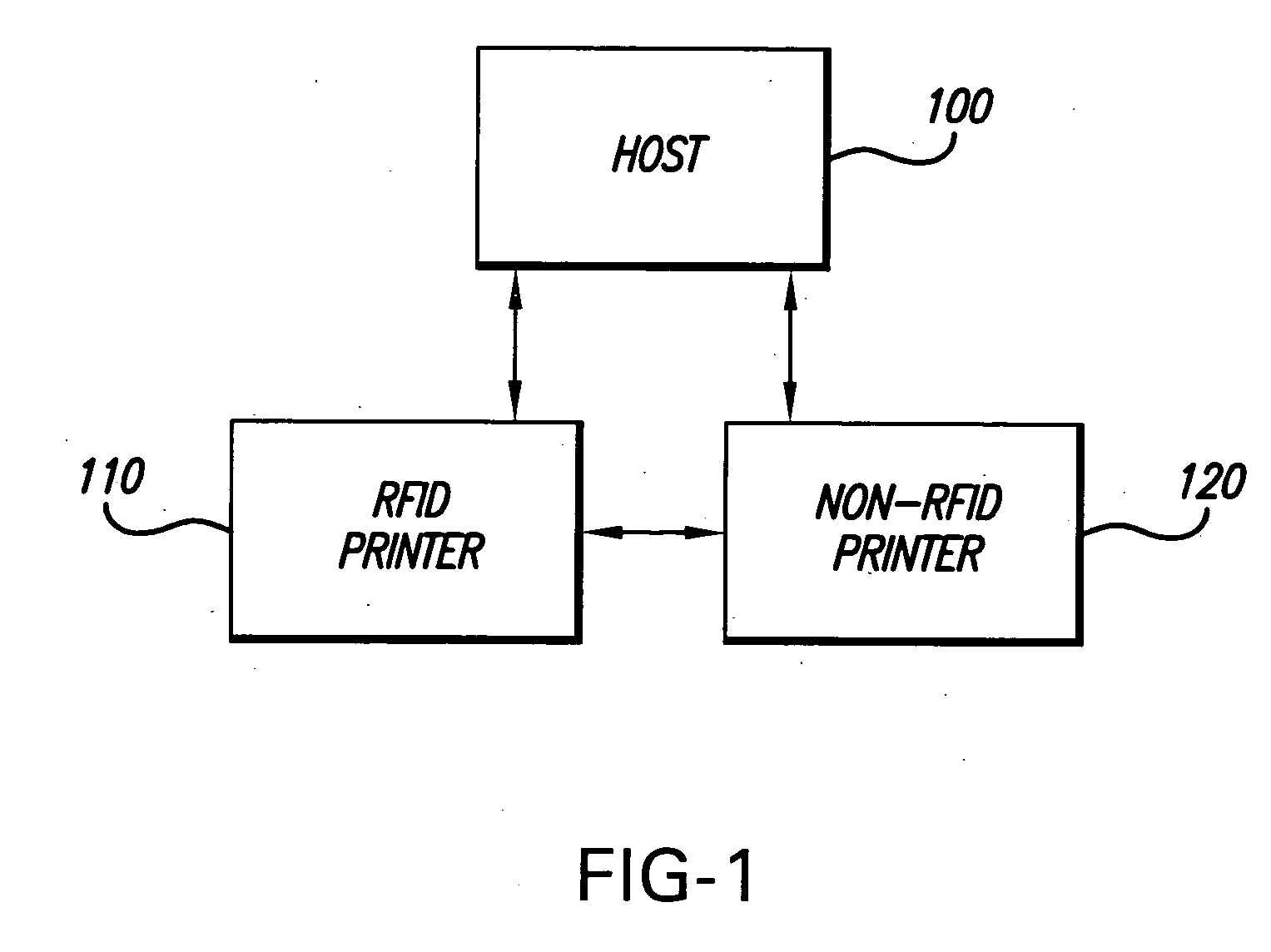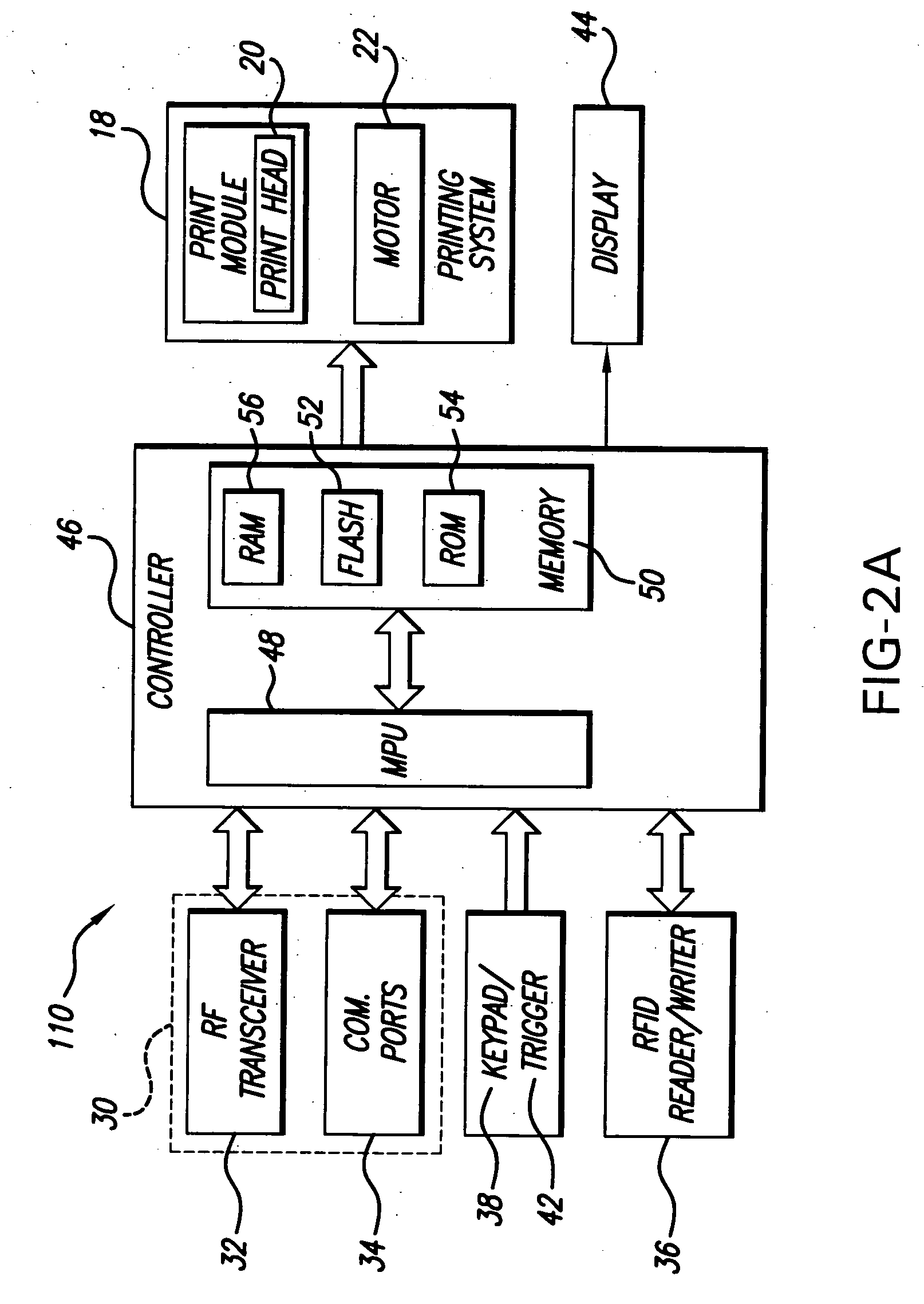RFID printer system, method of printing and sets of record members
- Summary
- Abstract
- Description
- Claims
- Application Information
AI Technical Summary
Benefits of technology
Problems solved by technology
Method used
Image
Examples
Embodiment Construction
[0045]FIG. 1 is a block diagram representing a system in accordance with one embodiment of the present invention. FIG. 1 shows a host 100, a Radio Frequency Identification (RFID) printer 110 and a non-RFID printer 120. The host 100 can be a computer mainframe, a personal computer, a workstation, a network server, a barcode scanner / terminal or any other data input device. The RFID printer 110 is illustratively loaded with, and capable of printing to, record members such as, but not limited to, labels, tags, tickets, forms, signs, or like media samples. The record members that are produced by the RFID printer 110 have embedded therein a RFID transponder that is capable of being programmed, via a radio frequency (RF) signal, to store various types of data. Such RFID transponders are known in the art and typically comprise an integrated circuit chip and a radio frequency antenna. The RFID integrated circuit typically includes a read-only memory (ROM) that stores a unique identification ...
PUM
 Login to View More
Login to View More Abstract
Description
Claims
Application Information
 Login to View More
Login to View More - R&D
- Intellectual Property
- Life Sciences
- Materials
- Tech Scout
- Unparalleled Data Quality
- Higher Quality Content
- 60% Fewer Hallucinations
Browse by: Latest US Patents, China's latest patents, Technical Efficacy Thesaurus, Application Domain, Technology Topic, Popular Technical Reports.
© 2025 PatSnap. All rights reserved.Legal|Privacy policy|Modern Slavery Act Transparency Statement|Sitemap|About US| Contact US: help@patsnap.com



